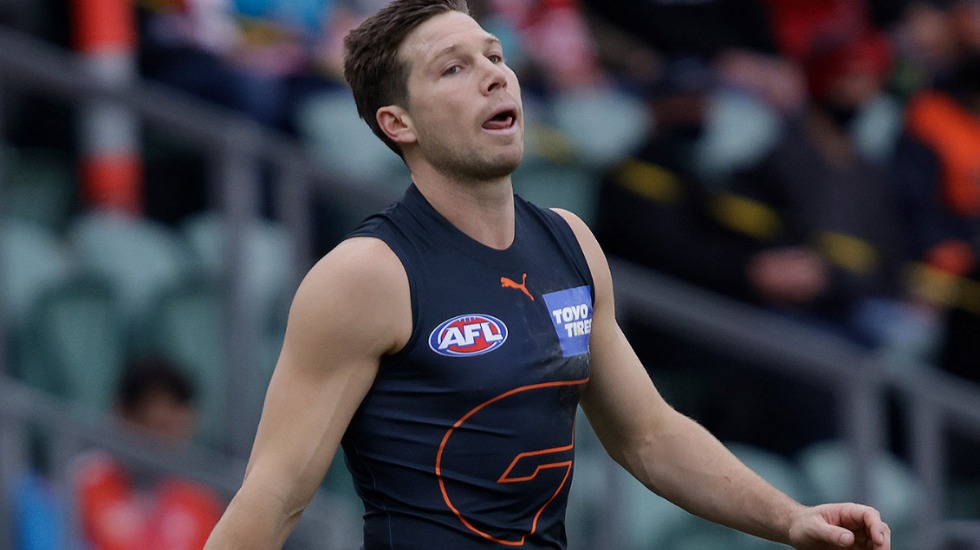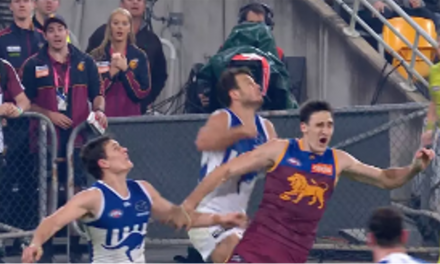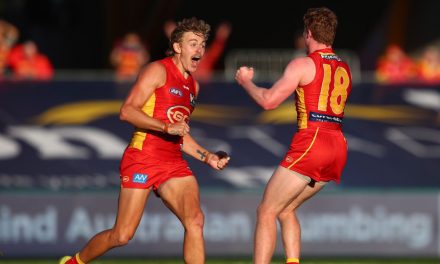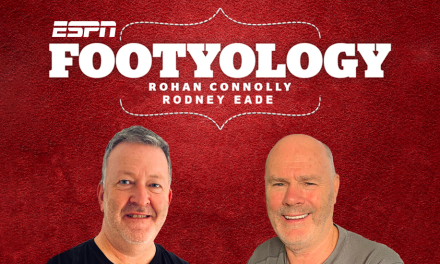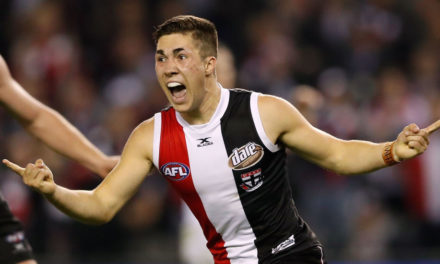Toby Greene was the centre of attention for all the wrong reasons yet again on the weekend. Photo: GETTY IMAGES
Three weeks for Toby Greene. My first reaction is neither that it’s too lenient nor heavy-handed a penalty, but politically astute.
Three games is enough to ensure Greene can’t take part in the rest of Greater Western Sydney’s finals campaign even if the Giants keep winning. And it’s not in the order of the six-game suspension for which many were calling, but which would only have given more legs to the “victim of persecution” narrative.
I don’t doubt that the likes of Greene attract more scrutiny from umpires and from the Match Review Officer, sometimes penalised for things with which others escape, more often unrewarded for free kicks which should go their way.
But then, ultimately, whose fault is that? There has to be a substantial enough record of prior convictions in the first place to have people forming those preconceptions.
And with Greene, it’s not just that he’s now been found guilty of a match review charge 22 times across 176 games and 10 seasons, and suspended seven times for a total of 11 matches, it’s the nature of too many of those incidents which work against a more compassionate view.
There’s plenty of other stars in football history who have, like Greene, been super-competitive in nature, who have, as the saying goes, “played close to the edge”. But what sort of edge?
Many of those former greats skirted close to an edge which involved bumps, tackles, shirtfronts and other incidents which could at least loosely be described as having some context in how a game of football is played. Though it sounds harsh, Greene’s “edge” often appears more on the unsavoury side.
Greene’s three-game penalty was his second instance of making reckless contact with an umpire. There’s been a fine for spitting in the direction of an opposition player. A fine for pushing a player into a fence. An infamous flying karate kick. A knee drop. And eye-gouging.
Greene conceded his contact last Saturday with umpire Matt Stevic “wasn’t a great look”. Nor is any of that above reading. And unless this really is a line in the sand moment for how Greene approaches his football, there’s a real danger those sorts of legacies will overshadow his incredible natural ability and what he’s been able to achieve doing what he does best.
When I heard the announcement of his three-game suspension on Tuesday, the first thing that sprung to mind was an analogy with an absolute superstar of the game several decades ago, but one whose penchant for spectacular brain fades sees him remembered as something of a tragic figure.
“Fabulous” Phil Carman remains one of the most naturally-gifted footballers the game has seen. Already a South Australian star when he arrived at Collingwood in 1975, Carman electrified crowds with his athleticism and goalkicking brilliance, famously booting 11 goals against St Kilda during that very first season at Moorabbin “debuting” a pair of then revolutionary white boots.
PLEASE HELP US CONTINUE TO THRIVE BY BECOMING AN OFFICIAL FOOTYOLOGY PATRON. JUST CLICK THIS LINK.
There were other similar highs. But Carman’s story is almost inevitably always framed around his stuff-ups, and two in particular.
The most infamous, of course, was a 16-game suspension when he played for Essendon in 1980 for headbutting a boundary umpire (along with another four games for striking St Kilda’s Garry Sidebottom).
But Greene’s three-game penalty on Tuesday also revived for me memories of Carman’s two-game suspension following the 1977 second semi-final for striking Hawthorn’s Michael Tuck, a totally unnecessary act with the Hawk not even part of a contest.
Carman had been in superlative form, arguably the most important part of Collingwood’s rise from wooden spooner to likely premier. But his suspension probably cost the Magpies a premiership. They would surrender a 27-point three-quarter time lead to North Melbourne to draw the grand final, then lose the replay.
Will Greene’s suspension have similar consequences for GWS? It’s unlikely, given the Giants still have to overcome Geelong then Melbourne even to reach another grand final. But it’s far from impossible. And who would argue that with the forward star as part of the line-up they wouldn’t have at least some sort of chance?
Of the six surviving finalists, I don’t think there’s any player more important to their team than Greene is to the Giants.
It’s not only that he’s been involved in 38 per cent of the Giants’ scores this season at an average 8.28 per game, easily No.1 in the competition for that statistic.
It’s his symbolic value to his team, never better represented than in the last few seconds against the Swans, when Greene again put his body on the line in front of a charging opponent to win a free kick, and thus the game.
When GWS beat this week’s opponent, Geelong, by 19 points in round 21, Greene’s four goals were effectively the difference between the two teams. Can the Giants find that sort of contribution elsewhere now? Unlikely, you’d think.
And if Greene’s suspension effectively ends this brave GWS tilt at a flag, it’s yet another unwanted chapter in a story which already has too many of them.
Yes, he’s now a two-time All-Australian and a best-and-fairest winner. Yes, he’s one of the most exciting and talented players the game has seen for a long time. But he’s also soon to turn 28, still without a premiership, and now consigned to that status for at least another year.
Phil Carman left the game without having tasted flag success, having shuffled between four clubs over eight seasons, and with an ever-lasting reputation as a wasted talent. Greene has already done enough in his career, and at one home, to avoid that sort of tag.
But perhaps he could do worse than have a chat to the former star about how reputations linger. Because it’s rapidly getting to the stage where the Toby Greene we end up remembering won’t be the Toby Greene that we should.
This article first appeared at ESPN.

